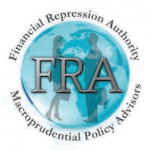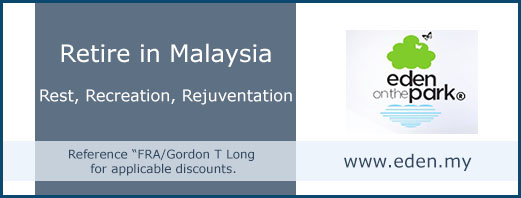
Hedge Fund manager Erik Townsend of Macro Voices is joined by Uli Kortsch in discussing his project Infrastructure Without Debt and the ways it will impact the current banking system.
Uli Kortsch is the Founder of both the Monetary Trust Initiative (MTI) and Global Partners Investments (GPI). Currently most of his time is spent on MTI whose mission is to bring transparency and authentic principles to our monetary system. He was asked to organize a conference on this topic at the Federal Reserve Bank in Philadelphia, the proceeds of which are now published as a book. He is a regular speaker at various conferences in different countries.
As President of Global Partners Investments and other ventures Mr. Kortsch has worked in over 50 countries, written a bill for Congress, and conferred with approximately 15 national presidents, ministers of finance, and ministers of commerce. He has served on numerous corporate boards with both for-profit and not-for-profit organizations.
INFRASTRUCTURE WITHOUT DEBT
The average infrastructure cost is twice the principle amount. The moment you talk infrastructure without debt, you’re saving 50% of all our infrastructure debt.
Right now most people think all of our money is created by private banks, when it’s actually created through deposit creation. If you sign a contract with the bank, that’s an asset to the bank that deposits into your account. The money was created out of nothing. We call that deposit creation, and that’s where our money comes from. If you were charged an interest rate, that interest payment is income for the bank, but the principle is destroyed. It did not exist at the beginning of the loan, and it does not exist when the loan is paid off.
That means in order to have price stability, as our overall production increases then the amount of money in circulation must also increase. And the only way that can increase is through more debt. So we’re constantly increasing the debt load. The US debt load ends up as part of the global debt load of all those who use US dollars. This is a very slow, long term process. Slowly we get to the level where this is not possible. It isn’t just that the government runs deficits, it’s the structure of our whole economy.
WAYS TO SOLVE
One of the way of solving this is to change who gets the seigniorage on the creation of that money. Today the indirect seigniorage goes to the bank, and they use it to charge you interest. People think that banks intermediate funds by moving funds from savers to investors and that the money moves in a circle. Long term, this will result in a crash. Short term, there are ways of solving that. President Lincoln used US notes to pay for the civil war and build infrastructure. It’s Treasury money deposited in the Federal Reserve bank with no interest rate, and the seigniorage goes to us as taxpayers. And that is infrastructure without debt.
Essentially it’s the creation of new Federal notes as opposed to Federal Reserve notes, which could be used to purchase infrastructure.
We are living in a temporary period of time where this could be done easily, because other than asset inflation we do not see much consumer inflation. We live in a time where this would work really well. The Federal government should create Federal Treasury money without the debt created when the Federal Reserve is used as an intermediary.
WHY INFRASTRUCTURE WITHOUT DEBT?
Private banks should not have the ability to create money. That should be taken away from them and given back to the government, so the amount of money created is equivalent to the increase in production. The current disinflationary state we’re in allows for temporary steps, and this has been done before multiple times over the course of history. Guernsey, for 200 years, has also used this method and the results have been spectacular.
No inflation has been triggered by this, though there was a strong inflationary during the 1870s and 1880s, but that had to do more with the terms of trade with the gold-based rest of the world. Because they do not create debt, there is no such thing as equity accounting in government accounts.
POSSIBLE DANGERS
What if this keeps going? This is a nuclear option and can be abused. The assumption is that the banks won’t be allowed to create money anymore, which takes the inflationary part out of this because the price stability portion is locked in. Part of the control is that it should never be 100%. So the US Federal government makes very few decisions about infrastructures; almost all of it is made by municipalities. The funding should never be 100%.
The danger is there, we’re headed for a major crash, and at that point it would be better for the system to radically change. If we could run infrastructure without debt for a few years, people might want to change the entire banking system.
HOW DO WE CONTROL THIS?
According to the system we’re using today, the government only owes what’s on its credit card. Government saving bonds are the “credit cards” of the government, and it only owes the issuance of its Treasuries. What does it actually owe in contract that it’s signed? Here in the US, we owe $205T.
Our money supply is constantly increasing through debt. We stabilize that through interest rates and the desires of banks to lend and borrowers to borrow. We are not going to increase the money supply; we’re currently doing that through debt anyway. We’re just shifting the methodology of how that money is created; only the seigniorage will go to the taxpayers. The amount of money created is identical.
The amount of money that is created, just as it is now, is strictly dependant on our ability to produce. Instead of gold-backed, this is production-backed money. The system is self-regulating, other than the control of the money, which you hand to a deliberately separate group of people under very strict rules. The downfall is that the banks will still make money.
A POTENTIAL SYSTEM FOR THE FUTURE
Under the infrastructure without debt system, banks are divided into two windows dependant on function. There’s the depository window, which keeps your money as yours since there’s no merging of the funds. On the income and investment side, things are mutualized and equity based. During the crash of 2007*2008, mutual funds didn’t go bankrupt because they’re equity-based.
Government insurance can only protect against one bank failing, not a systemic run on the fractional reserve banking system, only a run on an individual bank. It’s nowhere near big enough to protect against a systemic run. In the US, by law, the FDIC has to hold 1.15% of the aggregated deposits.
This whole international system is running on models, and their models are the most important thing, and this should change to human well-being. We need to run our decisions based on true results, rather than what we think the model is.
Abstract by: Annie Zhou <a2zhou@ryerson.ca>




 10/14/2016 - The Roundtable Insight: Uli Kortsch On Infrastructure Without Debt
10/14/2016 - The Roundtable Insight: Uli Kortsch On Infrastructure Without Debt



